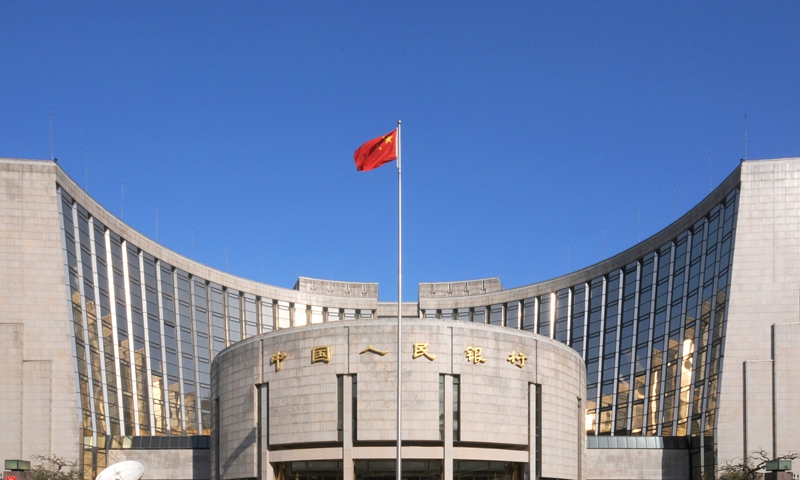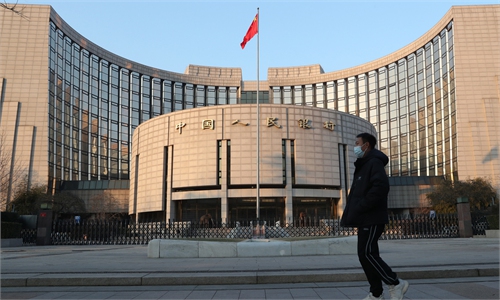China cuts both lending benchmark LPRs for the 2nd time this year to shore up economy

The building of the People's Bank of China in Beijing Photo: VCG
China’s central bank on Monday reduced the one-year and five-year loan prime rate (LPR) at the same time, the second time for this year, in the latest move to spur domestic spending and bolster the country’s economic recovery.
The five-year loan prime rate (LPR) – on which many lenders base their mortgage rates – was cut by 15 basis points (bps) from 4.45 percent to 4.3 percent, the People’s Bank of China, the country’s central bank, said on Monday. That equals the biggest cut on record. The central bank also trimmed the one-year LPR – which is primarily used to price corporate loans – by 5 bps from 3.7 percent to 3.65 percent.
This is the second time this year that both the one-year and five-year LPR have been cut at the same time, following a previous move in January.
In May, the central bank lowered the five-year LPR by 15 basis points to 4.45 percent, its biggest cut since LPR reform in August 2019.
The reduction in the five-year LPR was within analysts’ expectations, as the central bank announced last week that it was lowering the rate on 400-billion-yuan ($59.33 billion) worth of medium-term lending facility (MLF) loans to some financial institutions by 10 bps to 2.75 percent.
“The LPR cut is of monumental significance, sending a strong signal that the authorities will use monetary policies to stabilize economy in the second half of the year,” Yan Yuejin, research director at Shanghai-based E-house China R&D Institute, told the Global Times on Monday.
He said that the cut of 15 bps is slightly beyond expectations, which underscores the urgency of reducing the cost for medium and long-term lending.
The move will further reduce the financing costs for enterprises and individuals and effectively stimulate credit demand, according to Yan. “For 30-year mortgages of 1 million yuan, the five-year LPR cut would reduce monthly installment payment by around 100 yuan,” he calculated, noting that the move would continue to boost the recovery of the real estate sector.
In order to restore market confidence and spur demand over the short term, policymakers need to resolve potential risks in the real state sector, reduce the impact of COVID-19 outbreaks on the economic recovery and sustainably promote increase in individuals’ income, Li Xunlei, chief economist at Zhongtai Securities, said in an article posted on his WeChat public account.
Global Times

